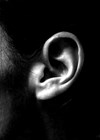Audiology features
Measuring the pitch and loudness of tinnitus
Matching the characteristics of tinnitus Many researchers and clinicians have explored the subjective nature of tinnitus by asking people with tinnitus to adjust a sound so that it matches their tinnitus in some way. This can be useful both for...
Questionnaires to measure tinnitus severity
The handicap associated with tinnitus can arise from any combination of stress, anxiety, depression, emotional distress, insomnia, difficulties concentrating, or impairments in quality of life or everyday functioning. Measuring such handicap and determining clinical need is therefore far from trivial....
Intratympanic treatments for subjective idiopathic tinnitus
Direct application of medication into the ear is long established, going back as far as written records. In the modern era, greater understanding of aural anatomy revealed that drugs instilled in the middle ear could potentially diffuse into the cochlea...
Drawing pictures and telling stories: treating tinnitus in childhood
There is increasing awareness that tinnitus is not restricted to adults. Indeed, the available evidence suggests that some experience of tinnitus in children is fairly common [1]. For many, tinnitus has little effect and requires limited or no intervention. For...
Selecting and optimising hearing aids for tinnitus benefit: a rough guide
Hearing aids have a relatively long history as tinnitus treatment tools. Saltzman and Ersner reported success in suppressing tinnitus with simple hearing aids in a number of cases as early as 1947 [1]. In an early comprehensive approach to tinnitus...
Mindfulness based approaches to tinnitus management: meditations on a new approach
Psychological approaches to tinnitus There is now widespread agreement that an individual’s interpretation of tinnitus can determine how distressing they find it. If tinnitus is regarded as non-threatening then habituation normally follows. If, however, tinnitus is interpreted as threatening, habituation...
What do animal models tell us about tinnitus and hyperacusis?
Do animals have tinnitus? The obvious question to ask is: do animals have tinnitus? It is known that tinnitus is a conscious percept and as such affected by attention and not audible during sleep. For it to be demonstrated that...
The European TINNET COST Action BM1306
Winfried Schlee describes how a major European funding award is bringing together experts who are committed to collectively developing a better understanding of tinnitus. This work is vital if we are to pioneer effective treatments for the condition in its...
Clinical WG1. Establishing a standard for tinnitus: patient assessment and characterisation
Rilana Cima and Haúla Haider introduce an ambitious pan-European collaboration that seeks to establish guidelines for achieving best clinical practice for managing, assessing and treating patients with different tinnitus profiles. Tinnitus heterogeneity is the major reason for inconsistent results in...
Database WG2. The Tinnitus Patient Database in the TINNET COST Action BM1306
Berthold Langguth describes an innovative project that is creating the world’s largest multi-national patient database containing standardised information on tinnitus and medical history, otological examination and psycho-acoustic measures of tinnitus. A challenge for tinnitus treatment and tinnitus research is the...
Neuroimaging WG3. Neuroimaging as a window on the heterogeneity of tinnitus
Pim van Dijk and Sven Vanneste describe the hope that brain imaging techniques used for research will provide a better understanding of the heterogeneity of tinnitus through large-scale analysis. Their project will create a procedure whereby researchers can submit their...
Genetics WG4. Improving diagnosis and drug development through the genetic understanding of tinnitus subtypes: a TINNET endeavour
Christopher R Cederroth and Jose Antonio Lopez-Escamez explain how progress is being made to investigate the contribution of genetic factors to tinnitus, including a subtype of ‘extreme’ tinnitus in Ménière’s disease. Genetics WG4 is working towards determining the genetic basis...















